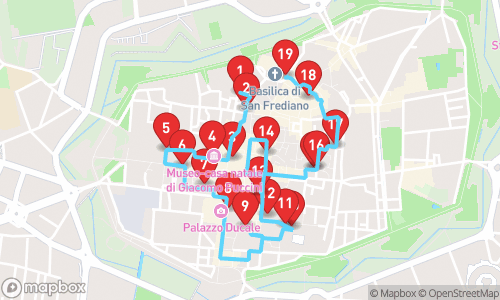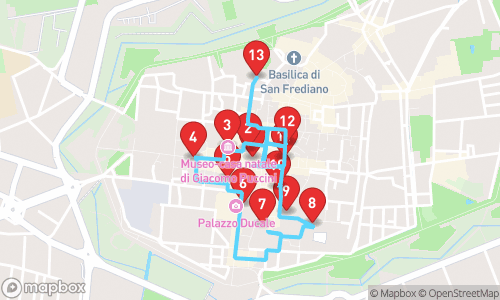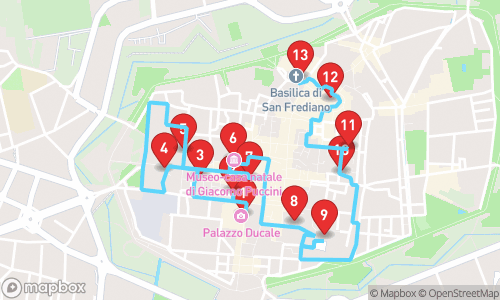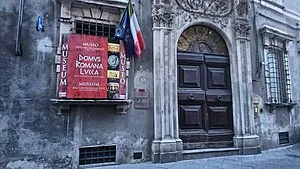
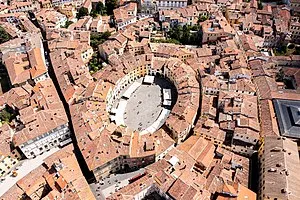

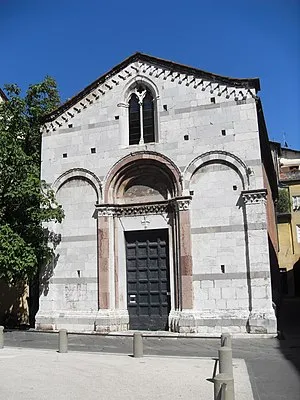
Lucca: A Hilarious History Hunt with Ryan Multilingual!

Tour Guide
Ryan Multilingual
Welcome to Lucca! On this GPS guided audio tour, we will visit 19 stops on a route of 3.56km. This tour focusses mainly on history.
Locatello is an app where you can generate personal audio guided tours. Set your preferred distance, guide, language and theme, and a guided tour is created on the spot.
Walking Time
Distance
stops
Language
Tour Stops

Domus Romana
A Roman archaeological site, the Domus Romana is a unique discovery containing a frozen moment of architectural evolution, showcasing Roman, medieval, and Renaissance styles within a single structure, with prominent exhibits including ancient remains and artifacts.

Piazza dell'Anfiteatro
A piazza built within the ruins of a former 1st-2nd century BC Roman amphitheater in Lucca, Tuscany. The elliptical square is surrounded by private residences and outdoor cafes, with a central cross marking the four gateways.
Audio Preview
30 sec
Guinigi Tower
A typical example of local Romanesque-Gothic architecture, the Torre Guinigi is a 45-meter tower with 233 steps to the top, featuring holm oaks growing on its summit.

Santa Giulia, Lucca
A Roman Catholic oratory in Lucca, dating back to the 10th century, with a façade blending Romanesque and Gothic styles, and an interior featuring ancient tombs and a venerated image of the Crucifixion.

Chiesa del Suffragio
A former Roman Catholic church, the Chiesa del Suffragio in Lucca's historic centre was built in the 17th century and consecrated in 1646.

Torre delle Ore
A medieval clock-tower, Torre delle Ore, is a turret clock located on Via Fillungo in central Lucca. Now owned by the Comune of Lucca, it houses a clock mechanism dating back to the 18th century and visitors can climb to view it.
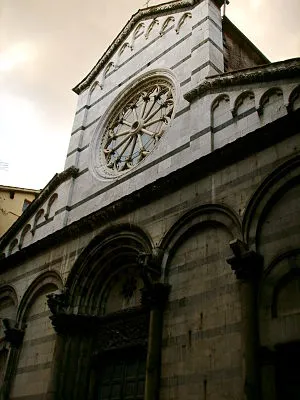
San Cristoforo, Lucca
A Romanesque and Gothic-style former Roman Catholic church, San Cristoforo was built with a pattern of alternating white and dark stone, influenced by Pisan architectural style, with parts dating back to the 12th and 14th centuries.

San Giusto
A 12th-century church in Lucca, San Giusto features a mixed decoration façade with white and black stripes, a central portal with atlases and lions, and Lombard bands on the apse's exterior. Its interior was remade in the 17th century in Baroque style.

Piazza San Michele (Lucca)
A historic square in Lucca, Piazza San Michele is a major hub of social activity, featuring medieval architecture, statues, and iconic landmarks like the church of San Michele in Foro. The square was once the Roman forum, with the Palatium Civitatis and Palazzo Pubblico situated nearby.
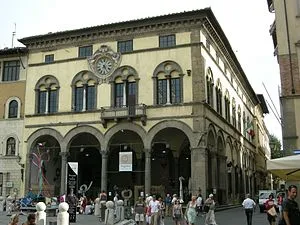
Palazzo Pretorio, Lucca
A Renaissance-style palace, built mainly during the 16th century, houses the courts of civil law in Piazza San Michele, Lucca. Its original structure dates back to 1370 as a tribunal and Hall of Justice, with later additions made in 1492 and 1588.
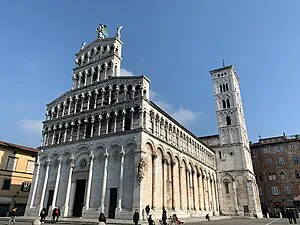
San Michele in Foro
A 13th-century church building with a notable façade featuring sculptures and inlays, rebuilt after 1070 by order of Pope Alexander II.
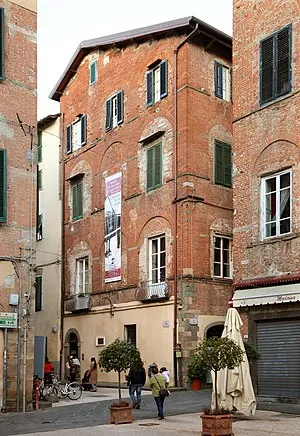
Museo-casa natale di Giacomo Puccini
A historic museum showcasing the birthplace and childhood home of Giacomo Puccini, with original furniture, personal belongings, and handwritten scores of his compositions.

Sant'Alessandro, Lucca
A rare and well-preserved example of medieval classicism, Sant'Alessandro is a tribute to the survival of Roman architectural tradition in Italy during the Dark Ages, showcasing a sober classicist facade with alternating limestone bands.
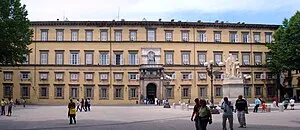
Ducal Palace, Lucca
A large palace of significant size, featuring a mix of Renaissance and Baroque architectural styles, owes its current appearance to various restorations and additions between the 16th and 19th centuries. Its interior halls house numerous artworks and decorative elements.
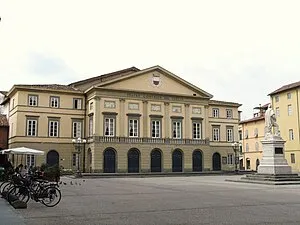
Teatro del Giglio
A historic theater and opera house, the Teatro del Giglio features a Neoclassical-style structure with a rusticated portico, pilasters, and a tympanum displaying the city's coat of arms, built in 1818.

Santi Giovanni e Reparata
A medieval church in Lucca, Italy, with origins dating back to the 5th century. The current structure was reconstructed in the 12th century and features a mix of Romanesque and Lombard architectural styles.
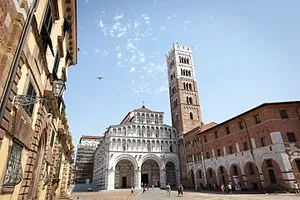
Piazza San Martino
A historic square in the heart of Lucca, dominated by the Duomo of San Martino, with an asymmetrical façade and a campanile.
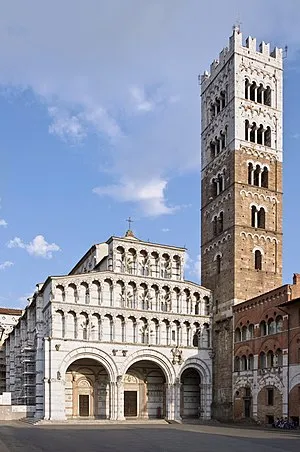
Lucca Cathedral
A Roman Catholic cathedral dedicated to Saint Martin of Tours, Lucca Cathedral features a mix of original and rebuilt structures, including a great apse, campanile, and 14th-century Gothic nave, as well as a vast portico and sculptures-adorned galleries.
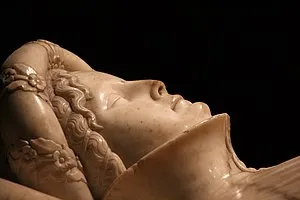
Tomb of Ilaria del Carretto
A marble statue of Ilaria del Carretto, created by Jacopo della Quercia between 1406 and 1408, depicting the young woman sleeping in a decorated catafalque, adorned with putti and a realistic dog at her feet.
Download App
Experience this tour and many more with our mobile app. Available for iOS and Android.
Audio Preview
Tour Map
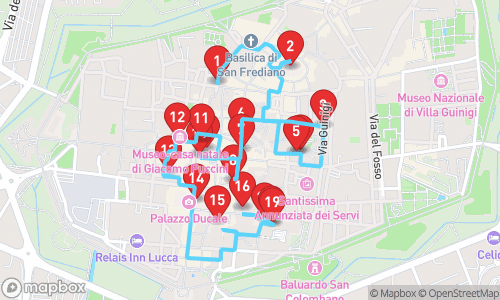
Quick Facts
- ✓GPS-guided navigation
- ✓Professional audio narration
- ✓Offline maps available
- ✓Premium content included
Why Choose This Tour
Expert Local Guide
Narrated by Jenny Multilingual, specializing in general tourism
Flexible Timing
Take the tour at your own pace, any time of day
